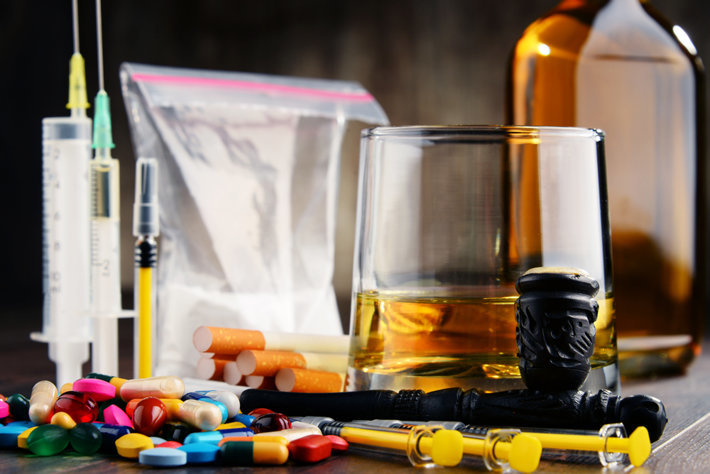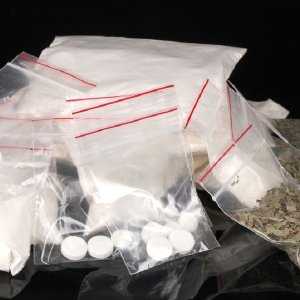Can You Detect the Use of these Substances by Your Child?
Part II
In Part I of this series, we informed parents how to detect the use of the “study drug” and prescription stimulant Adderall, marijuana and opioids like heroin or painkillers. In this article, we will cover detection of inhalants, alcohol, cough syrup and synthetic drugs.
Inhalants
On average, inhalant users are young. In fact, the largest age group going to rehab for inhalant use is 12 to 17-year-olds. But youth even younger may start to use these substances because they are so readily available. It would be extremely difficult to eliminate all the abusable inhalants from a household. Right now, there are probably inhalants in nearly every room of your house.
Detecting inhalant use can start with observing changes in the young person himself or being alert to aerosol or volatile products in the house going missing, or finding paint or solvent-stained rags or papers in the home or garage.
The user will often be nauseated and will have little appetite. He may have a runny nose or red eyes and be uncoordinated. While high, he could have a drunk or dazed appearance. His breath, body or clothes could smell like chemicals. He will probably be irritable, excited, restless or angry.
Alcohol
Just about anyone knows what alcohol smells like and what a drunk person looks like. Because a young person will want to keep his drinking a secret from his parents and perhaps his siblings, he may drink when he is away from home and come home late and go straight to his room. Determining if a young person is drinking may take more than direct observation.
Does he come home late and then sleep late? Does she seem particularly groggy or nauseated in the morning? Does he say he’s too sick to go to school or attend family functions, especially when he has been out late the night before? Does he smell sick or sour and often have a headache?
Has he had any accidents in his car or on his motorcycle or bicycle or has he gotten hurt some other way? Is he neglecting his grooming or care of his possessions? You will need to note if there is any alcohol missing from your home which could mean inventorying alcohol (better yet is to lock it up) or having some other method of measuring how much is present. A child stealing alcohol is quite capable of adding water to a bottle to conceal how much he took.

Cough Syrup
Younger people who do not have contacts to get illicit drugs or pills may resort to drinking cough syrup. Stores that don’t place this product behind locked doors or behind the counter may find that it disappears off the shelves. Older teens may abuse this substance because they can get it any time, any place.
Those abusing cough syrups look for products labeled “DM” for dextromethorphan. Young people abuse this drug for the euphoric, out-of-control feeling they get. They will feel dizzy and their perceptions will be distorted. High levels of use can result in numb fingers and toes, vomiting and loss of consciousness. Their hearts may beat rapidly or irregularly and they could even experience hallucinations or psychotic episodes if their dosages are high enough. Unconsciousness and seizures can result.
When a young person is abusing dextromethorphan products, he is taking far more than recommended. A normal dosage is 10 to 15 milligrams of the drug but an abuser will probably consume 240 to 360 milligrams.
Watch for cough syrup going missing from the home or empty bottles in the trash, a teen’s car or hidden in his room.
Synthetic Drugs
This is a very large and constantly changing category. Hundreds of different chemical formulas have been seized in the U.S. and Europe. Some of the most common synthetics include:
- MDMA (Ecstasy)
- Mephedrone
- Synthetic cannabis formulas nicknamed Spice or K2 or identified as JWH-018
- Bath salts formulas pyrovalerone, MDPV or N-BOMe (aka 25I-NBOMe)
- Stimulants and hallucinogens Bromo-dragonFLY, Benzo Fury, PMA and PMMA
While the effects of these drugs vary, they tend to be very strong stimulants. They increase the heart rate and blood pressure. On some of these drugs, the user can easily overheat, especially if they are used outdoors in hot weather, as often happens at music festivals.
It is common for a person to become delusional, paranoid or suicidal or experience hallucinations with many of these drugs.
If you see your loved one high on one of these drugs, it will probably be obvious. If he is using them away from home, he may appear confused, delusional, irritable and anxious when he is at home.
The All-Important Role of a Parent
As we discussed in Part I of this series, it is necessary for a parent to be on constant alert to detect the changes that reveal substance use by his or her children. These days, the drugs are too strong, too dangerous and far too available to “assume” that a child will not be tempted.
When one woman lost her son to suicide after years of addiction to marijuana, she wrote, “I felt a tremendous sense of guilt because I hadn’t thought that it was necessary to talk about drug use with my own boys.” Don’t let yourself be blindsided by drug use. Bring your family doctor into play if necessary to confirm drug use or rule it out.
To get information on all the most popular drugs so you can educate your children, visit this drug information page on the Narconon Arrowhead website. And call us at 1-800-468-6933 for help if someone you love becomes addicted to one of these drugs. We have been helping the addicted find lasting sobriety for fifty years. We can help you.
To read Part I of this series, Critically Important Parenting Skills: Detecting a Child’s Drug Use click here.
REFERENCE LINKS
General drug information
http://www.narcononarrowhead.org/drug-abuse/
Synthetic Drugs
http://www.narcononarrowhead.org/addiction/synthetic-drugs.html
Stimulants
http://www.narcononarrowhead.org/drug-abuse/synthetics/phenethylamines.html
Inhalants
http://www.cnn.com/2010/HEALTH/03/11/inhalant.abuse/
http://www.consumered.org/learn/inhalant-abuse/statistics
Marijuana
http://marijuanaharmlessthinkagain.org/wp-content/uploads/2013/10/Chris-Short-and-Tragic-Life.pdf


